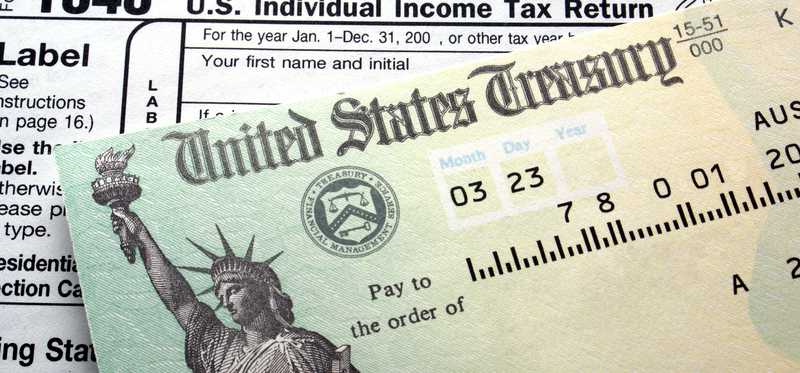25 Tax Breaks You Don’t Want to Miss

25 Tax Breaks You Don’t Want to Miss
There are still plenty of tax breaks available
The Tax Cuts and Jobs Act made some of the biggest changes to the United States tax code in several decades. Some deductions and tax breaks were eliminated, but there are many that survived. With that in mind, here are 25 tax breaks that you can still potentially use when you file your 2018 tax return in the coming months.
Previous
Next

Traditional IRA contributions
If you contribute to a traditional IRA, you may be able to deduct all of your contributions from your taxable income. For the 2018 tax year, the IRA contribution limit is $5,500, plus an additional $1,000 catch-up allowance if you’re 50 or older. Depending on your income and marital status, you might be able to take advantage of the traditional IRA deduction even if you have a 401(k) or similar retirement plan at work.
It’s also important to mention that you can make 2018 IRA contributions until the April 2019 tax deadline. So, even if you haven’t started yet, you still have several months to take advantage of this deduction.
Previous
Next

401(k) and other employer-retirement plan contributions
If the motivation of building a retirement nest egg isn’t motivation enough, keep in mind that any contributions you make to a tax-deferred retirement plan is excluded from your taxable income. In other words, if you earn $50,000 but contribute $5,000 to a 401(k), your income will be reduced to $45,000 before any other deductions or credits are applied.
The contribution limit for elective deferrals to a qualified retirement plan is $18,500 for 2018, plus a $6,000 catch-up allowance if you’re 50 or older. While it may not be practical (or necessary) to contribute the maximum allowed, increasing your retirement plan contributions can give you a nice tax break and help put you on the path to financial comfort in retirement.
Previous
Next

Medical expenses
The Tax Cuts and Jobs Act reduced the threshold for deducting medical expenses for the 2018 tax year. Taxpayers can deduct all qualifying medical expenses that exceed 7.5% of adjusted gross income. If you save all of your receipts for everything the IRA considers a medical expense, you might be surprised at how much it adds up.
For example, if your AGI is $50,000 in 2018 and you spend a total of $5,000 on medical expenses, you could get a $1,250 tax deduction. It’s definitely worth keeping track of your medical expenses if you plan on itemizing deductions.
Previous
Next

Educator expenses
If you’re a K-12 educator, you can deduct up to $250 in out-of-pocket classroom expenses you incurred during the year. This includes general classroom supplies, books, software you purchased to use in your teaching, and more. The best part is that this is an above-the-line deduction, meaning that you can use it regardless of whether you itemize deductions for 2018.
Previous
Next

The Saver’s Credit
Formally known as the Retirement Savings Contributions Credit, this is a lesser-known tax break that gives households with modest income free money to save for retirement. Depending on your income and filing status, you could qualify for a tax credit of 10%, 20%, or 50% of as much as $2,000 in retirement savings contributions. And if you’re married, both spouses can use the credit.
For 2018, married couples with adjusted gross incomes of $63,000 or less qualify for the credit, and you can read a Saver’s Credit guide I wrote to determine how much you might be able to get back.
Previous
Next

The American Opportunity Credit
The American Opportunity Credit is the more lucrative of the two tuition tax breaks, but is also the more restrictive. To qualify, you (or a student for whom you pay tuition) must be in the first four years of post-secondary education and must be enrolled at least half-time in a degree program. There are also income restrictions that are used to determine eligibility.
If you qualify, the credit is rather generous. It is worth 100% of the first $2,000 of tuition and qualified expenses, and 25% of the next $2,000 for a maximum credit of $2,500.
Previous
Next

Half of the self-employment tax
Employees pay a 6.2% tax for Social Security, up to a certain amount of income, and a 1.45% tax for Medicare on all earned income. Employers match these amounts as well. If you’re self-employed, you are responsible for paying both the employer and employee portions of the tax, which is collectively known as the self-employment tax.
One silver lining is that you can deduct the employee portion. So, you can take half of the self-employment tax you pay and deduct it from your taxable income. This can be a rather large deduction. For example, if your self-employment income is $100,000, you’ll pay $15,300 in self-employment tax. However, you can use $7,650 of this amount to lower your taxable income for the year.
Previous
Next

The Lifetime Learning Credit
While the Lifetime Learning Credit isn’t quite as generous as the American Opportunity Credit, it is significantly easier to qualify for in many cases. Specifically, you don’t need to be pursuing a degree or certificate, there is no half-time enrollment requirement, and you don’t have to be in your first four years of post-secondary education. In fact, you can simply take one class for personal enrichment and qualify for the credit. One drawback is that the income limitations are slightly more restrictive than for the American Opportunity Credit.
If you qualify, the Lifetime Learning Credit is worth 20% of your qualifying expenses up to a maximum of $10,000, for a maximum credit of $2,000. Unlike the American Opportunity Credit, you can use the Lifetime Learning Credit for as many years as you have qualifying expenses.
ALSO READ: American Opportunity Tax Credit vs. Lifetime Learning Credit: Which Can You Use?
Previous
Next

Long-term capital gains
If you are thinking of selling stock, mutual funds, or any other investments you own, be sure to look at how long you’ve owned it -- especially if you’re going to be selling it at a profit.
The IRS treats long-term capital gains more favorably than short-term gains. Long-term capital gains are defined as profits made on investments held for more than a year, and the tax difference can be substantial. For example, if you’re in the 32% marginal tax bracket for 2018, that’s the rate you’ll pay on short-term gains. Long-term gains, on the other hand, will be taxed at just 15%.
Previous
Next

Gambling losses
Did you know that if you win money in a casino or through another form of gambling, it is considered taxable income? However, if you also have gambling losses, you can deduct those on your tax return -- but only to the extent of your gambling winnings.
For example, if you win $2,000 from a slot machine in Las Vegas, but then lost $1,000 of it playing blackjack, you can use that to reduce the amount you’ll need to pay tax on.
Previous
Next

HSA contributions
A Health Savings Account, or HSA, is a tax-advantaged account that is designed to help Americans pay for healthcare expenses. Not only are contributions to your HSA tax-deductible, but qualified withdrawals used to pay healthcare expenses are 100% tax-free.
HSA funds can be invested, similarly to money in a 401(k), and unlike a Flexible Spending Account, or FSA, there’s no limit to the amount of money you can carry over from year-to-year.
Previous
Next

Home office deduction
If you work from home and have a dedicated space in your home that you use as a home office, you can deduct the expenses related to the space. For example, if your home office occupies 10% of the square footage of your home, you can deduct 10% of your utilities, rent, etc. as a home office deduction. As you can imagine, this can be a complex calculation, so the IRS also offers a simplified method of calculating the deduction -- feel free to use whichever method is more beneficial to you.
ALSO READ: Say Goodbye to the Home Office Deduction -- Unless You Do This
Previous
Next

The child tax credit
One major change made by the Tax Cuts and Jobs Act is the doubling of the Child Tax Credit from $1,000 to $2,000 per qualifying child. And, as much as $1,400 of the credit is now refundable, while this was previously a non-refundable credit. Income thresholds are high for this credit -- it doesn’t start to phase out until AGI of $400,000 for married couples filing jointly or $200,000 for all other taxpayers.
To qualify, the child must be under 17 and must get most of their financial support from you. If they don’t qualify on the age requirement, there’s also a new $500 “family credit” for non-child dependents.
Previous
Next

Property taxes
If you own a home or pay property taxes on some other item (like a car), you can deduct the taxes you pay as an itemized deduction on your 2018 tax return.
Two caveats. First, the Tax Cuts and Jobs Act limited the total amount of state and local taxes you can deduct to a total of $10,000. This includes property taxes, state and local income taxes or sales taxes. Second, since the standard deduction has nearly doubled for 2018, itemizing will no longer be worthwhile for millions of Americans.
Previous
Next

Adoption credit
One of the most lucrative tax breaks to survive the Tax Cuts and Jobs Act is the Federal Adoption Tax Credit. This credit is designed to compensate parents for qualified adoption expenses, such as attorney fees, adoption agency fees, court costs, and travel expenses. For 2018, the maximum adoption credit is $13,840, so this can go a long way towards covering adoption costs.
Previous
Next

State and local income taxes
Along with property taxes, the deduction for state and local income taxes is the other main part of the so-called SALT deduction. This is an itemized deduction that is capped at $10,000 per year, but it is still usable if you qualify. For example, if you pay $4,000 in property taxes and $5,000 in state income taxes, you can add $9,000 to your itemizable deductions for 2018.
Previous
Next

Sales taxes
Taxpayers who itemize have the choice between deducting state and local income taxes or their sales taxes. In most cases, income taxes are the bigger deduction, but in some circumstances (such as living in a state with no income tax), the sales tax deduction can be quite valuable. And don’t worry about saving each and every receipt throughout the year to document how much sales tax you paid -- the IRS provides an estimation method you can use.
Previous
Next

Investment losses
If you sell any stocks or other investments at a loss during 2018, you can use those losses to offset any capital gains you may have had. For example, if you sell one stock at a $5,000 gain and another at a $2,000 loss, you can reduce your taxable capital gain to $3,000. Long-term losses must first be used to offset long-term gains, and the same goes for short-term losses and gains.
If you have more losses than gains, you can use the excess to reduce your other taxable income, by up to a maximum of $3,000. Excess losses can be carried over to the next tax year if you have more than $3,000 in net losses.
Previous
Next

Charitable contributions
If you itemize deductions, you can deduct the contributions you’ve made to charitable organizations throughout the year. While this deduction survived the Tax Cuts and Jobs Act, there have been a few notable changes for 2018.
First, if you donate to a college in order to be able to buy athletic tickets, this is no longer a deductible donation. And, the maximum deduction is now capped at 60% of income, up from the previous 50%.
Previous
Next

Mortgage interest
The itemized deduction for mortgage interest remains, and here’s the 2018 (and beyond) version:
Homeowners can now deduct the interest on as much as $750,000 in mortgage principal on “qualified residence loans.” Interest paid on home equity debt may be deductible, but only if the loan was used to substantially improve the residence. In other words, if you obtain a home equity loan to pay for a vacation, you can’t deduct the interest. Pre-existing mortgages are held to the former $1,000,000 principal limitation.
Previous
Next

Mortgage insurance
If you put less than 20% down when buying your home, there’s a good chance you have to pay private mortgage insurance, or PMI. For the 2018 tax year, the mortgage interest deduction has been extended.
For the purposes of your tax return, you can consider the mortgage insurance you pay as part of your mortgage interest expense. So, if you pay $8,000 in mortgage interest and $2,000 in PMI, you’ll have a $10,000 mortgage interest deduction.
Previous
Next

Home equity loan interest (in certain cases)
There used to be a separate provision in the tax code that allowed the interest on up to $100,000 of home equity debt to be deducted. Unfortunately, this was eliminated as part of the Tax Cuts and Jobs Act.
However, if you have a home equity loan or you drew money from a home equity line of credit (HELOC) which was used to improve your home, the interest can still be deducted. Now, the $750,000 principal cap applies to all loans -- mortgages and home equity debt -- that can be considered “qualified residence loans.”
Previous
Next

Student loan interest
Student loan interest is still deductible in 2018, up to a maximum of $2,500. And, this is an above-the-line deduction, which means that you can take advantage of it even if you don’t itemize deductions on your 2018 tax return. To claim the student loan interest deduction, your modified adjusted gross income (MAGI) must be less than $80,000 if you file as single or head of household, or $160,000 if you’re married and file a joint tax return.
Previous
Next

Child and Dependent Care Credit
The Child and Dependent Care tax credit allows parents to deduct qualified child care expenses and is worth as much as $1,050 for one child under 13 or $2,100 for two qualifying children.
In addition to the credit, as much as $5,000 of income can be sheltered (excluded from your taxable income) in a dependent care flexible spending account. To be clear, you can’t use both the credit and FSA benefit for the same child care expenses, but with child care costs being what they are, it’s fair to say that many parents will still be able to take advantage of both tax breaks.
Previous
Next

The EITC
The Earned Income Tax Credit, or EITC, is designed to give lower-income Americans tax relief. Qualifying income limitations depend on the number of children you have and your filing status. The maximum amount of the EITC in 2018 ranges from $519 for taxpayers with no children to as much as $6,431 for taxpayers with three or more qualifying children.
Previous
Next

Still plenty of tax breaks you can qualify for
As you can see, the Tax Cuts and Jobs Act left many tax breaks for Americans, and even expanded a few of them. And, many of them don’t require that you itemize deductions, so you can use some of these in conjunction with the expanded standard deduction.
The Motley Fool has a disclosure policy.
Previous
Next
Invest Smarter with The Motley Fool
Join Over Half a Million Premium Members Receiving…
- New Stock Picks Each Month
- Detailed Analysis of Companies
- Model Portfolios
- Live Streaming During Market Hours
- And Much More
READ MORE
HOW THE MOTLEY FOOL CAN HELP YOU
-
Premium Investing Guidance
Market beating stocks from our award-winning service
-
The Daily Upside Newsletter
Investment news and high-quality insights delivered straight to your inbox
-
Get Started Investing
You can do it. Successful investing in just a few steps
-
Win at Retirement
Secrets and strategies for the post-work life you want.
-
Find a Broker
Find the right brokerage account for you.
-
Listen to our Podcasts
Hear our experts take on stocks, the market, and how to invest.
Premium Investing Services
Invest better with The Motley Fool. Get stock recommendations, portfolio guidance, and more from The Motley Fool's premium services.